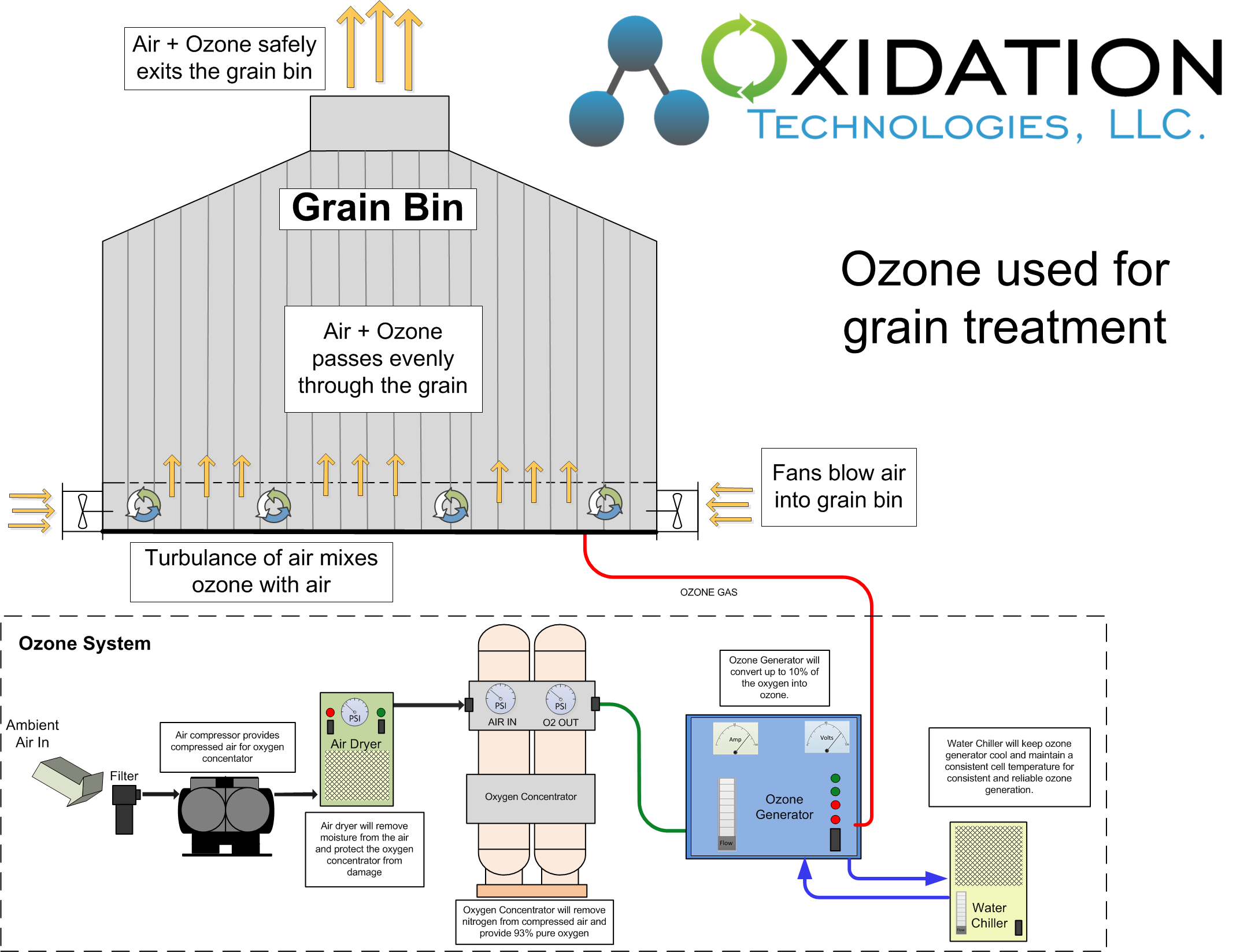It’s been a wet year here in the Midwest. Wet years are great for crop yields however, the moisture also causes higher levels of mold in the fields. Certain strains of mold leave by-products called mycotoxins, like aflatoxin and vomitoxin. These toxins cause health issues in livestock and humans if this grain is consumed as food stock. Therefore, the mycotoxins must be reduced, and removed if possible.
Wet year causes high levels of mycotoxins in harvested grains
http://www.wpr.org/wisconsin-corn-farmers-battle-mold-thanks-wet-weather


Ozone is a potential solution to reduce or remove mycotoxins from grains. The use of ozone gas in a grain bin, silo, or other storage method may prevent or remove mycotoxins from your grain.
Ozone gas is produced via an ozone generation system. This ozone gas is pumped into the grain bin and diluted with existing air flow to treat the grain. Ozone treatment may be necessary over the course of days or even weeks depending upon your specific application. Ozone equipment is available in trailers that can be set near the grain bin for the duration of the required ozone treatment.
Ozone monitors can measure, and verify ozone levels leaving the grain bin to ensure ozone gas has passed through the entire grain bin and a residual of ozone is present. This will verify operation of the system.
Learn more about ozone use for mycotoxin reduction and available equipment HERE

